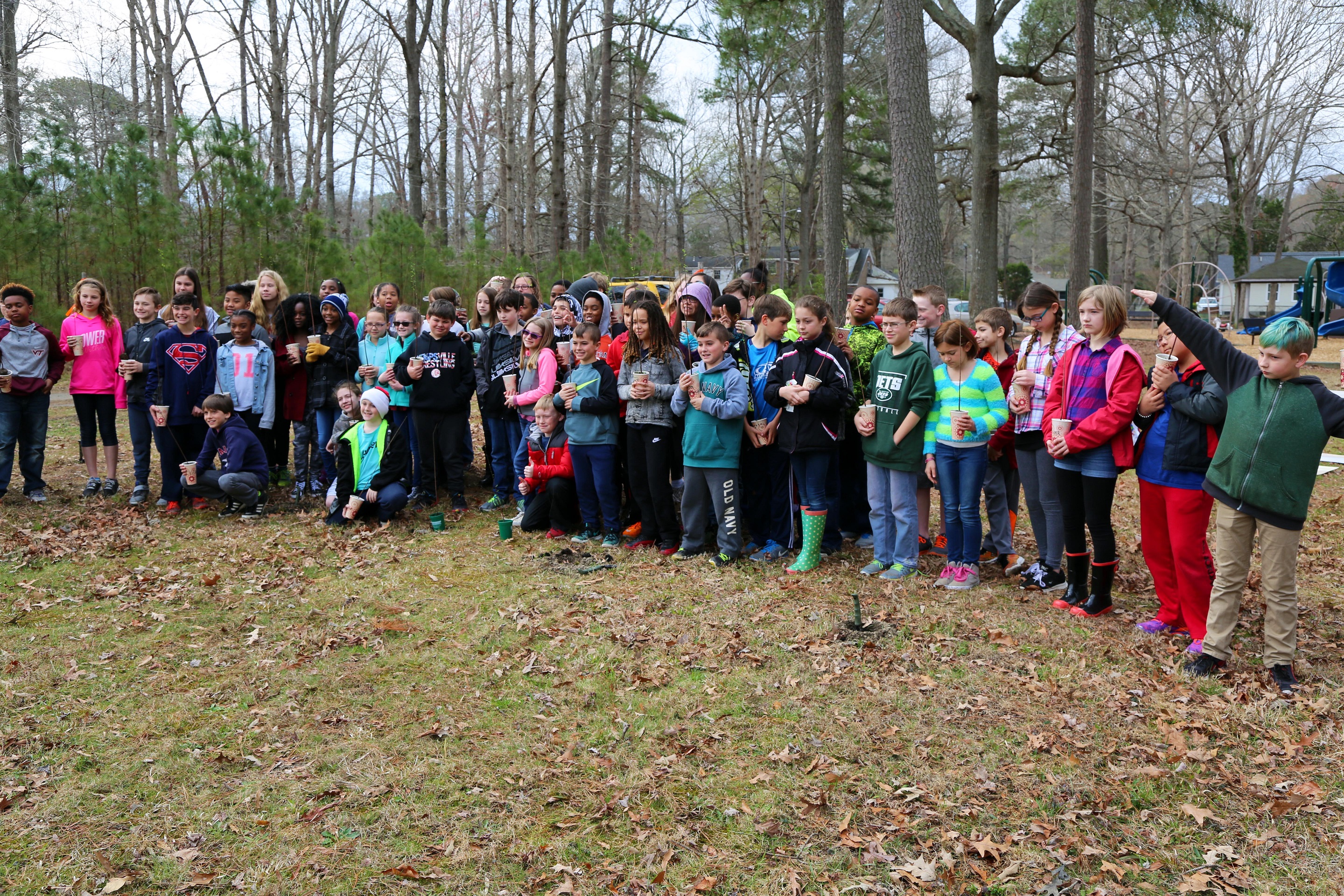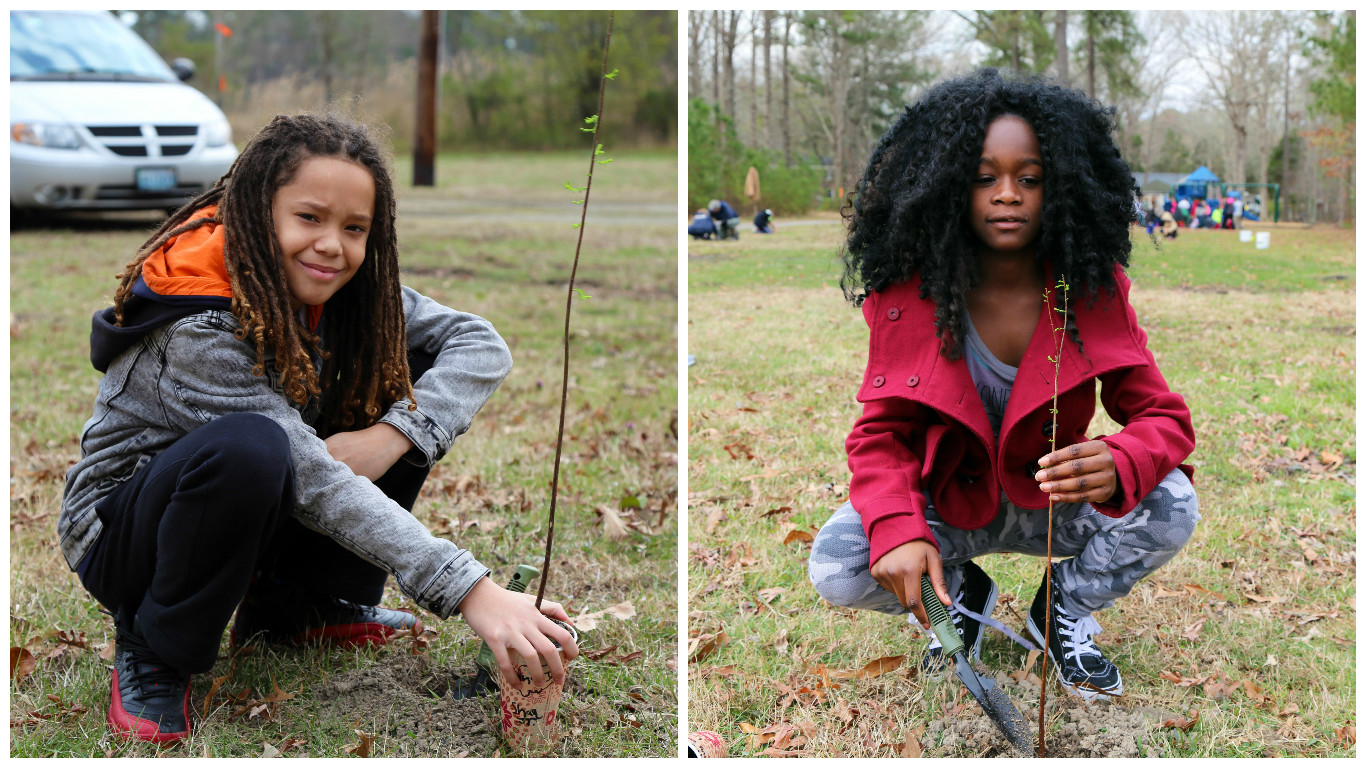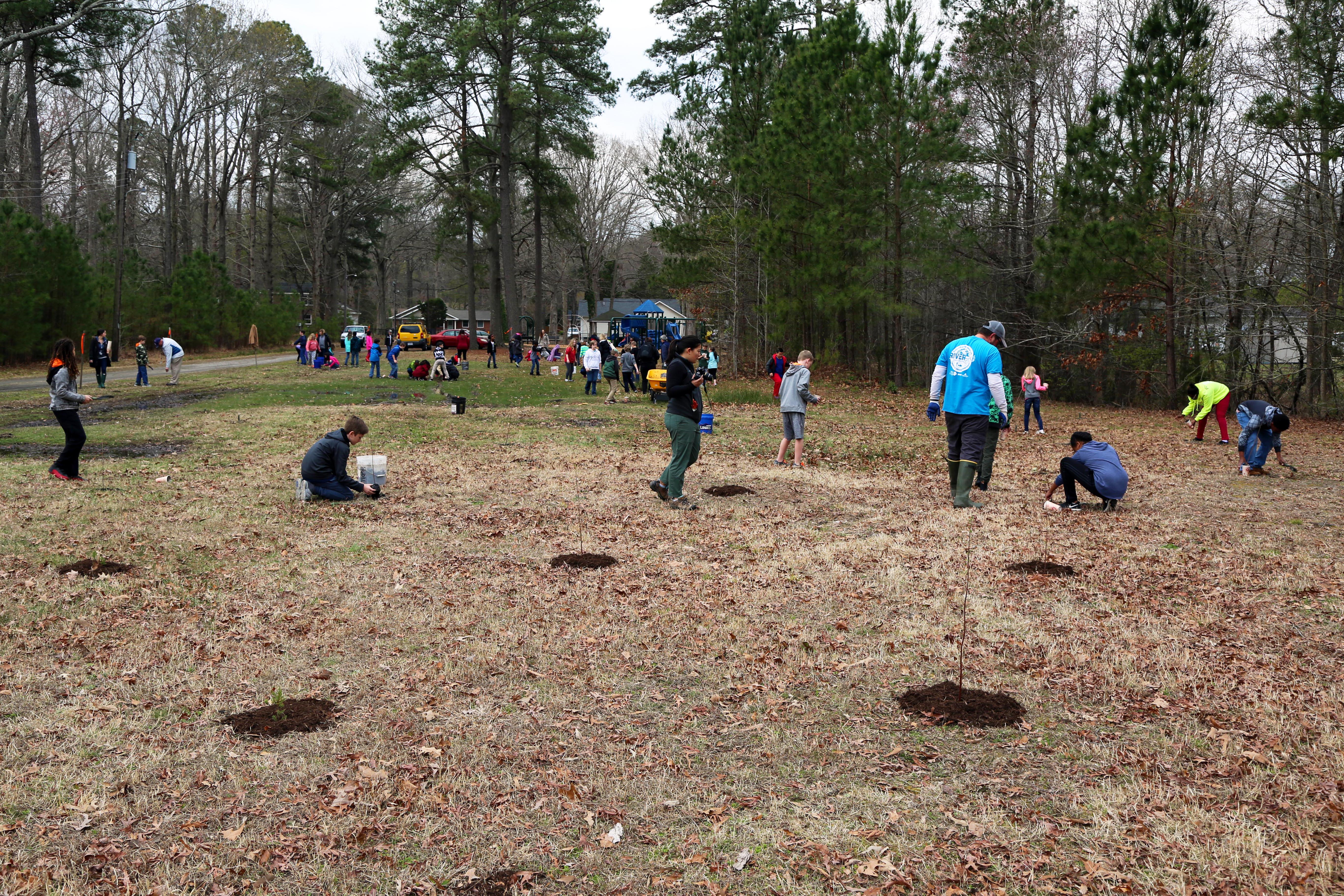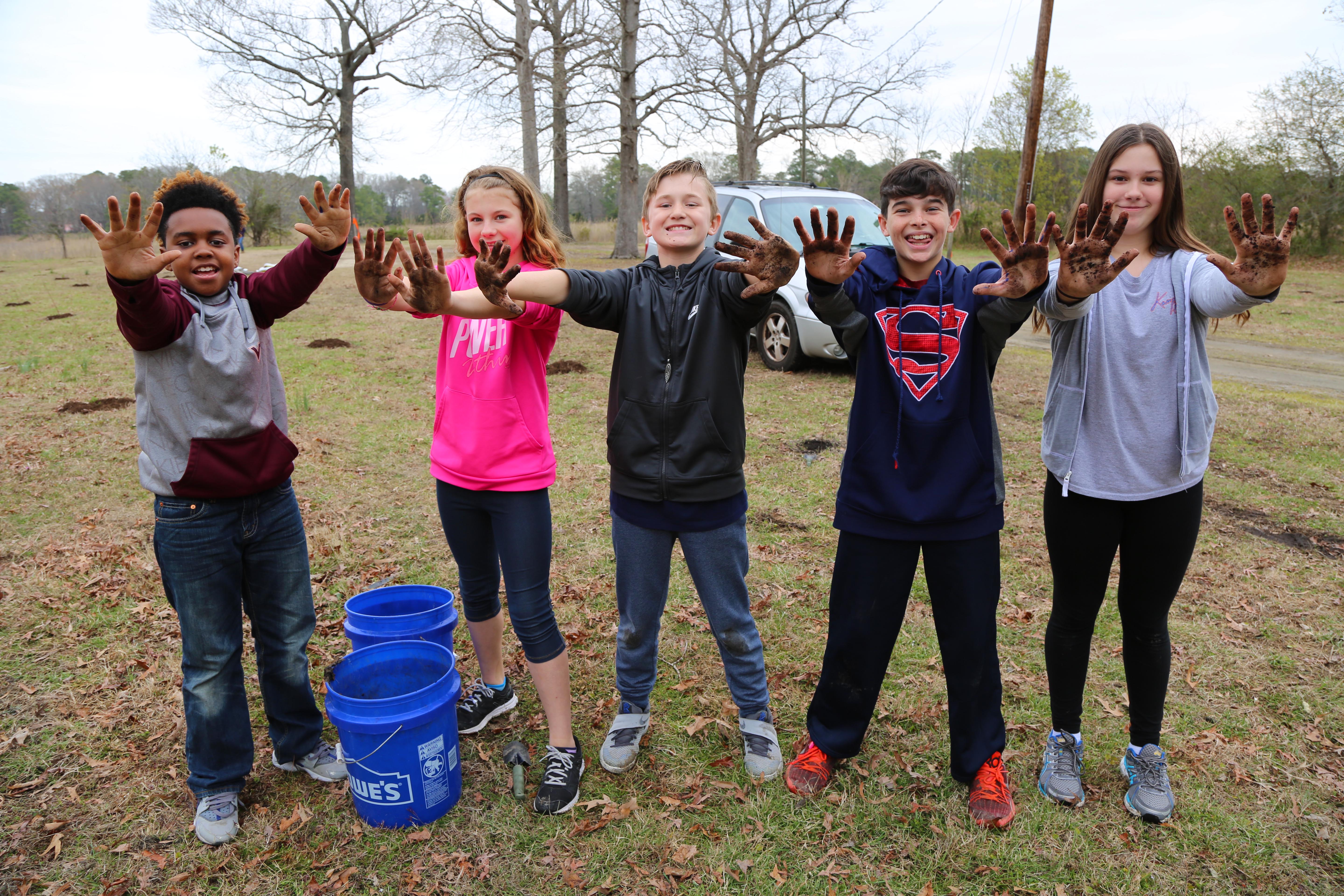Imagine 70 fifth-graders standing with their feet together, knees together and their hands together. As they wiggle their fingers, they pay homage to the environment by loudly repeating, “Jellyfish, jellyfish, jellyfish.” This amusing sight was actually the culmination of a lesson in stewardship.
“We are planting trees to help the Elizabeth River Project,” said Shelby, a fifth-grade student from Kempsville Elementary School. “It helps with the environment and gives the animals a habitat. There is sea level flooding and these trees will help prevent that.”
Shelby and her Kempsville Elementary classmates recently converged upon the Woods of Avalon Park along the Elizabeth River to plant Bald Cyprus trees that they had nurtured.
“We have a lot of restoration projects that we do all over the Elizabeth River,” said Robin Dunbar, deputy director of education at Elizabeth River Project (ERP). “For the last 10 years we have had more than 7,000 students from the cities that the river runs through – Norfolk, Portsmouth, Chesapeake and Virginia Beach – nurturing trees, wildflowers or grasses in the classroom and then planting them at restoration sites.”

The National Fishing and Wildlife grant along with support from the Dollar Tree Foundation made the project possible. Fifth-grade teacher Tracy Sykes explained that the trees were the focal point of a much larger lesson.
“We received the trees in February so we’ve been taking care of them for about four weeks. Each week we’ve measured them using our metric rulers and keeping track of their growth on a growth chart.”
“In addition, we did a couple of lessons on wetlands and the importance of this project,” Sykes continued. “They were very excited to learn about all of these challenges that this area is going to be faced with in a couple of years. They get to participate in something pretty authentic that is part of the solution, so it’s a very exciting thing to do.”
Dunbar talked about the important role the students were playing. “This helps us address the loss of wetlands that we have experienced, it helps us address the flood issues that we have had and it also helps us build a more resilient community here in the city.”

Sykes reflected on the lessons learned as she watched the students scatter across the park, placing their trees in the ground and filling the holes with dirt.
“The challenges facing this area are real,” Sykes said. “There are rising sea levels, the destruction of wetlands. The students have learned that we’ve lost a tremendous amount of wetlands over the past 60 to 70 years. They learned about the importance of them and how they can aid in flooding. They could relate to the naval base and the shipyard and economic problems that can occur because of mass flooding. When we look back to the flooding in the fall, it’s a real thing to the students, one that they can really relate to.”
Adam is a fifth-grade student who doesn’t mind getting his hands dirty for a good cause.
“We’re planting trees for the environment because the waters are rising so we’re going to plant trees and we’ll see if the trees will help,” he said. “This is important because if we don’t plant the trees the water could get too high. If it gets too high, it could flood buildings and houses and other stuff. I think it’s cool that I helped.”
“There is a deep sense of satisfaction to what they have done,” Sykes added. “And it’s a nearby park so they can come visit. They’ve been asking me if they will be able to come back and see their trees and see how they’ve grown. I do think that it is something that will stay with them their entire lives.”
To Dunbar, projects like this are an investment in the future, for the environment and the students.
“These are 21st century students who are going to be our leaders in the future,” she said, “and I think that they are actually leaders now as they mentor each other. They work as a team and they absolutely love coming outside and maintaining nature and doing their part.”



